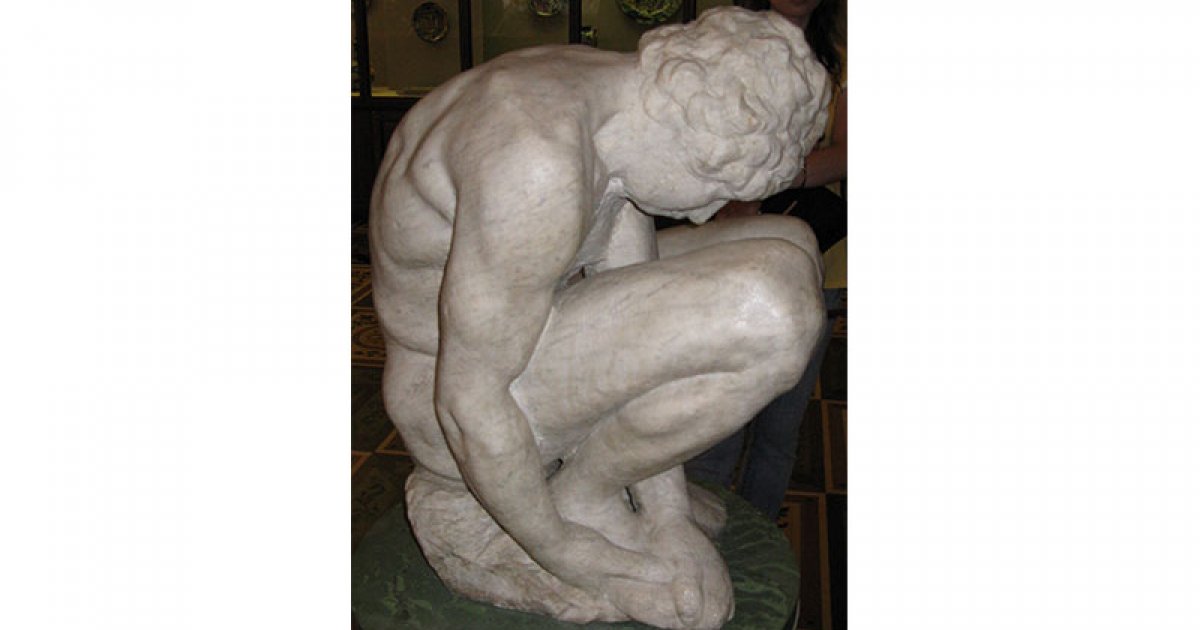HERMITAGE, Crouching Boy, By Michelangelo, Room 237
 Language: English / USA
Language: English / USA
The famous statue known as the Crouching Boy, by Michelangelo Buonarroti, is a naked, muscular boy, who seems to be trying to remove a thorn from his foot. This impressive sculpture from 1524 is shrouded in mystery.
First of all, even today there is some doubt among experts as to whether it is actually the work of Michelangelo, and above all, we cannot be certain whether it was intended for the tomb of Pope Julius II in Rome, where Michelangelo worked for several years, between 1505 and 1516, or for the tomb of Giuliano de' Medici at the New Sacristy in the Basilica of San Lorenzo in Florence. The consensus among scholars seems to lean towards the Basilica, on the strength of sketches that show a very similar sculpture.
If you look carefully at this splendid work, which appears unrefined and unfinished, you can still see the marks of the chisel. But the curled hair, the position of the young man doubled up, perhaps in pain, reveal the skill of the artist.
Michelangelo left many of his works unfinished, and indeed some experts believe that once he had taken the block of stone and carved from it the shape best suited to the piece of marble he was working on, he often lost interest in completing the sculpture. Would you agree that this is the impression given by this work? It does rather look as if the boy's forced pose follows the original shape of the block it was carved from, doesn’t it? From this point of view, it could be said that Michelangelo was several centuries ahead of his time, since contemporary art often focuses more on the material used to create a work than on the actual form of the work.
One of the theories that enjoys a good deal of support is that this figure represents the pain of an unborn soul, lost in limbo, and perhaps not perfectly defined also for this reason.
An interesting fact: this sculpture, which originally belonged to the Italian Medici family of Florence, was purchased by Catherine the Great through a banker, who was unaware that it was a masterpiece by Michelangelo, and it was not attributed to him until 1923, thanks to a German scholar who found a drawing by Michelangelo that closely resembled the statue of the youth.



